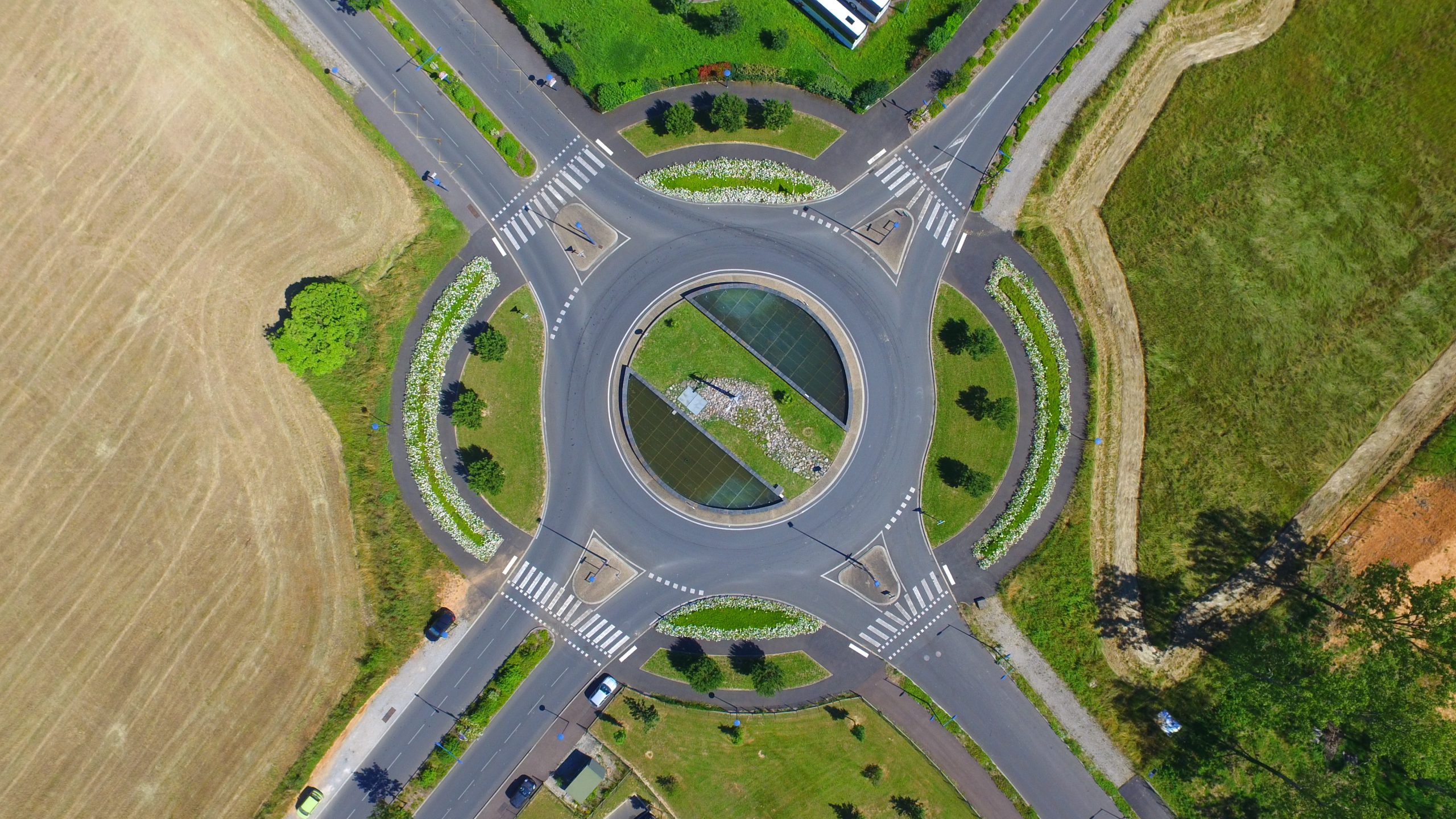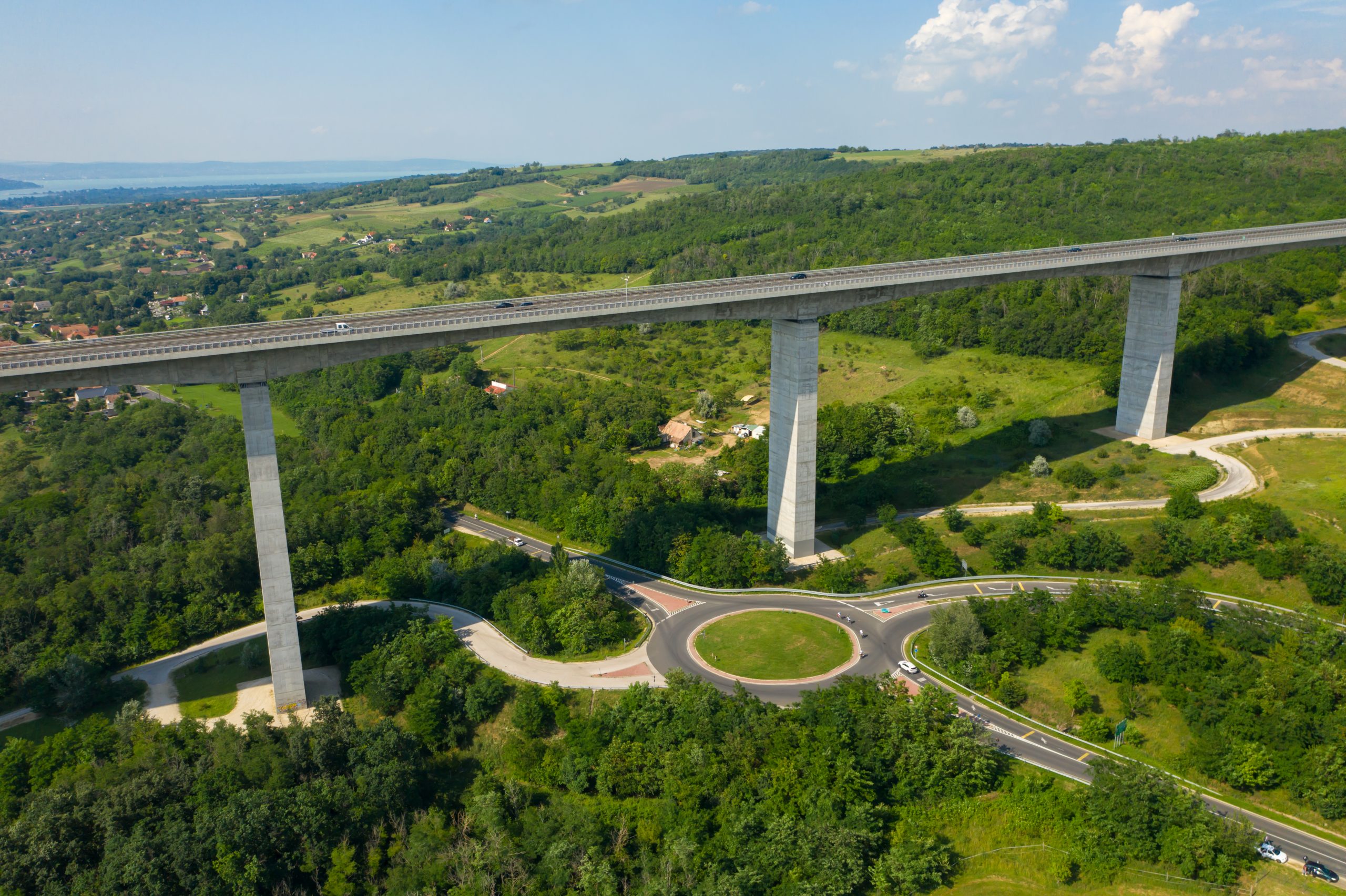Roundabouts And Traffic Circles

Traffic Circles and Roundabouts
Intersections can be difficult to manage, even for skilled drivers. In some cities, traffic circles and roundabouts help to keep traffic flowing and improve safety for everyone. However, drivers need to learn the skills necessary for these traffic control features to be able to use them effectively.
As the Traffic Association of Canada website notes, the first traffic circle in North America was the Columbus Circle in New York, built in 1905. At first, these traffic devices had many design flaws and fell out of use until British engineers helped correct some of these problems, and they began to regain popularity.
The first modern roundabouts in Canada came in the 1990s, and their use increases each year. Although people often use the terms “roundabout” and “traffic circle” interchangeably, the Traffic Association of Canada distinguishes between modern roundabouts and old-style circular intersections or traffic circles.
How to Manage a Roundabout or Traffic Circle

The Ontario Ministry of Transportation defines roundabouts as circular intersections where two or more roads meet. Traffic moves around these circles in a counterclockwise direction around a centre island. As is the case for other roads, vehicles already in the circle have the right-of-way and anyone entering the circle must yield to them.
Moving smoothly through a traffic circle or roundabout can take some practice. As the Region of Waterloo website explains, drivers approaching a traffic circle should be careful to watch for vehicles coming from the left. Signs at the side of the road and markings on the pavement can guide drivers as they enter the circle.
When a gap in traffic is available, a driver can move forward into the circle. Small roundabouts might have only one choice of where to go, but often, these traffic circles give drivers a choice of several lanes to follow. Road signs sometimes indicate the best choice, but drivers often have to make this decision for themselves.
As the Region of Waterloo site explains, drivers going straight ahead can use the same lane for entering and exiting the roundabout. Drivers planning to turn right should stay in the outer lane so that they disrupt other traffic as little as possible. For turning left, drivers should use the inner lane and go three quarters of the way around the circle before exiting to the left. Drivers making a U-turn should similarly use the inner lane until they come to the road returning them to where they need to go.
Several cities in the Waterloo area have traffic circles, including Waterloo itself, Cambridge, Kitchener, Wellesley, and Woolwich. In addition, roundabouts are planned for a number of other areas.
Signage for Roundabouts and Traffic Circles
As with many other special road features, roundabouts or traffic circles have special signage to warn drivers of what is coming. A common type of sign indicating a traffic circle is a diamond-shaped yellow sign with three arrows arranged in a circle, one following after the other.
Although roundabout signs vary, they all have common features: an indication of a rounded intersection with arrows showing the direction that drivers are supposed to follow. In most cases, the signs give sufficient time for drivers to change lanes if necessary.
Even though they are designed to help traffic flow smoothly and to improve safety, problems can still occur. For example, even though traffic circles are generally safer for pedestrians than other types of intersection, collisions still occur, especially when the driver exits the circle. At that point, it is especially important for drivers to be careful and to watch for other road users.
Special Features
As the City of Ottawa’s website explains, roundabouts have a number of features designed to increase safety and minimize delays. The central island is in the middle of the circle, with traffic moving around it. This area also provides space for pedestrians to wait for a gap in traffic to allow them to cross. Often, roundabouts will have markings on the pavement at each of the sides to indicate an official pedestrian crossing.
Usually, a yield sign or a line painted in the road indicates where the roundabout officially begins. Splitter islands, either raised above the pavement or painted on it, separate the vehicles entering and exiting the circle. These features also let drivers know which way to go when they enter the circle.
Depending on the road, a roundabout or traffic circle might have to accommodate anything from bicycles to large trucks. Smaller roundabouts frequently have a special truck apron. As the Ontario Ministry of Transportation website explains, truck aprons are special sections of pavement around the central island. These sections are slightly raised to discourage drivers of cars and other small vehicles from using them. However, they provide extra space for the back wheels of a truck in case the turn is too tight to manage otherwise.
Large vehicles
Going around a traffic circle in a large truck can be a difficult task. Often, vehicles like these need to use two lanes to be able to manage the circle safely, and extra caution may be necessary to avoid scraping against the central island or against other barriers. Since trucks have a very large blind spot, other drivers should be especially cautious about driving immediately behind these vehicles.
Because trucks take up so much space, other drivers should exercise special caution when they enter a traffic circle together with a truck. If possible, drivers may wish to wait for any trucks to clear the intersection before they attempt to go through. Even if that is not possible, however, they can still exercise caution and give trucks extra space to negotiate the circle without the additional need to watch for traffic.

Small vehicles and pedestrians also require consideration in roundabouts. Cyclists may find these intersections difficult to negotiate, especially if they are unsure of the right-of-way rules. Pedestrians also might need time to become accustomed to the flow of traffic in a roundabout or traffic circle. As always, drivers should exercise special caution when pedestrians or cyclists are nearby.
As roundabouts and traffic circles become more common, knowing how to use them will become increasingly important. Every driver should learn this useful skill.
